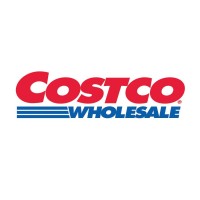
DIXY Group Company Cyber Security Posture
dixy.ruThe DIXY Group of Companies is one of Russia's leading retailers of grocery and everyday products. The company specializes in developing neighborhood store supermarkets in Moscow, St. Petersburg and three federal districts of Russia: Central, Northwest and Ural and also in the Kaliningrad region, which together account for more than half of the retail market for foods and everyday products in the Russian Federation. In May 2007, the Company raised $360 million in its IPO on RTS and MICEX. Company shares are included in two RTS indexes: the Consumer & Retail Index (RTScr) and the RTS-2 Second-Tier Stock Index (RTS2), as well as in the MICEX Consumer Goods and Services Index (MICEX CGS). The Mercury Group of Companies, a diversified holding company, owns a controlling stake in OJSC DIXY Group. DIXY's first store opened in Moscow in March 1999; at the same time MEGAMART retail stores began operating in Yekaterinburg. The DIXY chain has been expanding in St. Petersburg since 2000. The company initially focused on serving the mass consumer segment in Russia's most popular soft discount format. DIXY is growing rapidly and expanding its geographic presence, opening new stores in various regions of Russia. The company is successfully operating in different store formats within the modern supermarket format. This enables it to reach a wider audience with the most diverse consumer preferences and incomes, which ensures rapid sales growth.
DIXY Group Company Details
dixy-group
10,001+ employees
0
452
Retail
dixy.ru
Scan still pending
DIX_3340801
In-progress
Between 800 and 900
This score is AI-generated and less favored by cyber insurers, who prefer the TPRM score.
 DIXY Group Global Score
DIXY Group Global Score.png)

DIXY Group Company Scoring based on AI Models
| Model Name | Date | Description | Current Score Difference | Score |
|---|---|---|---|---|
| AVERAGE-Industry | 03-12-2025 | This score represents the average cybersecurity rating of companies already scanned within the same industry. It provides a benchmark to compare an individual company's security posture against its industry peers. | N/A | Between 800 and 900 |
DIXY Group Company Cyber Security News & History
| Entity | Type | Severity | Impact | Seen | Url ID | Details | View |
|---|
DIXY Group Company Subsidiaries

The DIXY Group of Companies is one of Russia's leading retailers of grocery and everyday products. The company specializes in developing neighborhood store supermarkets in Moscow, St. Petersburg and three federal districts of Russia: Central, Northwest and Ural and also in the Kaliningrad region, which together account for more than half of the retail market for foods and everyday products in the Russian Federation. In May 2007, the Company raised $360 million in its IPO on RTS and MICEX. Company shares are included in two RTS indexes: the Consumer & Retail Index (RTScr) and the RTS-2 Second-Tier Stock Index (RTS2), as well as in the MICEX Consumer Goods and Services Index (MICEX CGS). The Mercury Group of Companies, a diversified holding company, owns a controlling stake in OJSC DIXY Group. DIXY's first store opened in Moscow in March 1999; at the same time MEGAMART retail stores began operating in Yekaterinburg. The DIXY chain has been expanding in St. Petersburg since 2000. The company initially focused on serving the mass consumer segment in Russia's most popular soft discount format. DIXY is growing rapidly and expanding its geographic presence, opening new stores in various regions of Russia. The company is successfully operating in different store formats within the modern supermarket format. This enables it to reach a wider audience with the most diverse consumer preferences and incomes, which ensures rapid sales growth.
Access Data Using Our API

Get company history
.png)
DIXY Group Cyber Security News
Russians buying cheaper food items as incomes fall, says leading retailer
Russians shoppers are switching to cheaper food items driven by a drop in real disposable income, the country's leading food retailer X5 ...

DIXY Group Similar Companies

NAPA Auto Parts
Through nearly 6,000 auto parts stores and over 16,000 auto care and collision centers in the U.S., NAPA has America’s largest network of parts and care. The NAPA Network is supported by nationwide distribution centers with approximately 800,000 available parts, accessories and supplies. Widely reco

Massimo Dutti
Massimo Dutti (Inditex Group) was founded in 1985 and was acquired by Inditex in 1991. It now has over 700 stores in more than 72 countries. The brand was originally aimed at men's fashion. Starting in 1995, women's fashion was launched in all its dimensions: from the most urban lines to the more c

Imtiaz
As a market leader in the retail industry, Imtiaz is committed to pushing boundaries and redefining standards. Our team thrives on challenge and embraces the opportunity to make a meaningful impact on retail industry and beyond. At Imtiaz, diversity and inclusion are at the core of who we are. We be

Costco Wholesale
Costco Wholesale is a multibillion dollar global retailer with warehouse club operations in 11 countries. We are the recognized leader in our field, dedicated to quality in every area of our business and respected for our outstanding business ethics. Despite our large size and rapid international ex

Wegmans Food Markets
Wegmans Food Markets is a family-owned regional supermarket chain and one of the largest private companies in the US. Recognized as an industry leader and innovator, the company was founded in 1916 and employs over 53,000 people. Wegmans has been named one of the “100 Best Companies to Work For” by

Chow Sang Sang Holdings International Limited
For 90 years, Chow Sang Sang has captured the hearts of millions with its exquisite jewellery collections. Inspired by its philosophy of “Sustained Vitality, Ever Rejuvenated” and driven by a relentless pursuit of perfection, the brand has become an icon of design, craftsmanship, quality and profess

Frequently Asked Questions (FAQ) on Cybersecurity Incidents
DIXY Group CyberSecurity History Information
Total Incidents: According to Rankiteo, DIXY Group has faced 0 incidents in the past.
Incident Types: As of the current reporting period, DIXY Group has not encountered any cybersecurity incidents.
Total Financial Loss: The total financial loss from these incidents is estimated to be {total_financial_loss}.
Cybersecurity Posture: The company's overall cybersecurity posture is described as The DIXY Group of Companies is one of Russia's leading retailers of grocery and everyday products. The company specializes in developing neighborhood store supermarkets in Moscow, St. Petersburg and three federal districts of Russia: Central, Northwest and Ural and also in the Kaliningrad region, which together account for more than half of the retail market for foods and everyday products in the Russian Federation. In May 2007, the Company raised $360 million in its IPO on RTS and MICEX. Company shares are included in two RTS indexes: the Consumer & Retail Index (RTScr) and the RTS-2 Second-Tier Stock Index (RTS2), as well as in the MICEX Consumer Goods and Services Index (MICEX CGS). The Mercury Group of Companies, a diversified holding company, owns a controlling stake in OJSC DIXY Group. DIXY's first store opened in Moscow in March 1999; at the same time MEGAMART retail stores began operating in Yekaterinburg. The DIXY chain has been expanding in St. Petersburg since 2000. The company initially focused on serving the mass consumer segment in Russia's most popular soft discount format. DIXY is growing rapidly and expanding its geographic presence, opening new stores in various regions of Russia. The company is successfully operating in different store formats within the modern supermarket format. This enables it to reach a wider audience with the most diverse consumer preferences and incomes, which ensures rapid sales growth..
Detection and Response: The company detects and responds to cybersecurity incidents through {description_of_detection_and_response_process}.
Incident Details
Incident 1: Ransomware Attack
Title: {Incident_Title}
Description: {Brief_description_of_the_incident}
Date Detected: {Detection_Date}
Date Publicly Disclosed: {Disclosure_Date}
Date Resolved: {Resolution_Date}
Type: {Type_of_Attack}
Attack Vector: {Attack_Vector}
Vulnerability Exploited: {Vulnerability}
Threat Actor: {Threat_Actor}
Motivation: {Motivation}
Incident 2: Data Breach
Title: {Incident_Title}
Description: {Brief_description_of_the_incident}
Date Detected: {Detection_Date}
Date Publicly Disclosed: {Disclosure_Date}
Date Resolved: {Resolution_Date}
Type: {Type_of_Attack}
Attack Vector: {Attack_Vector}
Vulnerability Exploited: {Vulnerability}
Threat Actor: {Threat_Actor}
Motivation: {Motivation}
Common Attack Types: As of now, the company has not encountered any reported incidents involving common cyberattacks.
Identification of Attack Vectors: The company identifies the attack vectors used in incidents through {description_of_identification_process}.
Impact of the Incidents
Incident 1: Ransomware Attack
Financial Loss: {Financial_Loss}
Data Compromised: {Data_Compromised}
Systems Affected: {Systems_Affected}
Downtime: {Downtime}
Operational Impact: {Operational_Impact}
Conversion Rate Impact: {Conversion_Rate_Impact}
Revenue Loss: {Revenue_Loss}
Customer Complaints: {Customer_Complaints}
Brand Reputation Impact: {Brand_Reputation_Impact}
Legal Liabilities: {Legal_Liabilities}
Identity Theft Risk: {Identity_Theft_Risk}
Payment Information Risk: {Payment_Information_Risk}
Incident 2: Data Breach
Financial Loss: {Financial_Loss}
Data Compromised: {Data_Compromised}
Systems Affected: {Systems_Affected}
Downtime: {Downtime}
Operational Impact: {Operational_Impact}
Conversion Rate Impact: {Conversion_Rate_Impact}
Revenue Loss: {Revenue_Loss}
Customer Complaints: {Customer_Complaints}
Brand Reputation Impact: {Brand_Reputation_Impact}
Legal Liabilities: {Legal_Liabilities}
Identity Theft Risk: {Identity_Theft_Risk}
Payment Information Risk: {Payment_Information_Risk}
Average Financial Loss: The average financial loss per incident is {average_financial_loss}.
Commonly Compromised Data Types: The types of data most commonly compromised in incidents are {list_of_commonly_compromised_data_types}.
Incident 1: Ransomware Attack
Entity Name: {Entity_Name}
Entity Type: {Entity_Type}
Industry: {Industry}
Location: {Location}
Size: {Size}
Customers Affected: {Customers_Affected}
Incident 2: Data Breach
Entity Name: {Entity_Name}
Entity Type: {Entity_Type}
Industry: {Industry}
Location: {Location}
Size: {Size}
Customers Affected: {Customers_Affected}
Response to the Incidents
Incident 1: Ransomware Attack
Incident Response Plan Activated: {Yes/No}
Third Party Assistance: {Yes/No}
Law Enforcement Notified: {Yes/No}
Containment Measures: {Containment_Measures}
Remediation Measures: {Remediation_Measures}
Recovery Measures: {Recovery_Measures}
Communication Strategy: {Communication_Strategy}
Adaptive Behavioral WAF: {Adaptive_Behavioral_WAF}
On-Demand Scrubbing Services: {On_Demand_Scrubbing_Services}
Network Segmentation: {Network_Segmentation}
Enhanced Monitoring: {Enhanced_Monitoring}
Incident 2: Data Breach
Incident Response Plan Activated: {Yes/No}
Third Party Assistance: {Yes/No}
Law Enforcement Notified: {Yes/No}
Containment Measures: {Containment_Measures}
Remediation Measures: {Remediation_Measures}
Recovery Measures: {Recovery_Measures}
Communication Strategy: {Communication_Strategy}
Adaptive Behavioral WAF: {Adaptive_Behavioral_WAF}
On-Demand Scrubbing Services: {On_Demand_Scrubbing_Services}
Network Segmentation: {Network_Segmentation}
Enhanced Monitoring: {Enhanced_Monitoring}
Incident Response Plan: The company's incident response plan is described as {description_of_incident_response_plan}.
Third-Party Assistance: The company involves third-party assistance in incident response through {description_of_third_party_involvement}.
Data Breach Information
Incident 2: Data Breach
Type of Data Compromised: {Type_of_Data}
Number of Records Exposed: {Number_of_Records}
Sensitivity of Data: {Sensitivity_of_Data}
Data Exfiltration: {Yes/No}
Data Encryption: {Yes/No}
File Types Exposed: {File_Types}
Personally Identifiable Information: {Yes/No}
Prevention of Data Exfiltration: The company takes the following measures to prevent data exfiltration: {description_of_prevention_measures}.
Handling of PII Incidents: The company handles incidents involving personally identifiable information (PII) through {description_of_handling_process}.
Ransomware Information
Incident 1: Ransomware Attack
Ransom Demanded: {Ransom_Amount}
Ransom Paid: {Ransom_Paid}
Ransomware Strain: {Ransomware_Strain}
Data Encryption: {Yes/No}
Data Exfiltration: {Yes/No}
Ransom Payment Policy: The company's policy on paying ransoms in ransomware incidents is described as {description_of_ransom_payment_policy}.
Data Recovery from Ransomware: The company recovers data encrypted by ransomware through {description_of_data_recovery_process}.
Regulatory Compliance
Incident 1: Ransomware Attack
Regulations Violated: {Regulations_Violated}
Fines Imposed: {Fines_Imposed}
Legal Actions: {Legal_Actions}
Regulatory Notifications: {Regulatory_Notifications}
Incident 2: Data Breach
Regulations Violated: {Regulations_Violated}
Fines Imposed: {Fines_Imposed}
Legal Actions: {Legal_Actions}
Regulatory Notifications: {Regulatory_Notifications}
Regulatory Frameworks: The company complies with the following regulatory frameworks regarding cybersecurity: {list_of_regulatory_frameworks}.
Ensuring Regulatory Compliance: The company ensures compliance with regulatory requirements through {description_of_compliance_measures}.
Lessons Learned and Recommendations
Incident 1: Ransomware Attack
Lessons Learned: {Lessons_Learned}
Incident 2: Data Breach
Lessons Learned: {Lessons_Learned}
Incident 1: Ransomware Attack
Recommendations: {Recommendations}
Incident 2: Data Breach
Recommendations: {Recommendations}
Key Lessons Learned: The key lessons learned from past incidents are {list_of_key_lessons_learned}.
Implemented Recommendations: The company has implemented the following recommendations to improve cybersecurity: {list_of_implemented_recommendations}.
References
Additional Resources: Stakeholders can find additional resources on cybersecurity best practices at {list_of_additional_resources}.
Investigation Status
Incident 1: Ransomware Attack
Investigation Status: {Investigation_Status}
Incident 2: Data Breach
Investigation Status: {Investigation_Status}
Communication of Investigation Status: The company communicates the status of incident investigations to stakeholders through {description_of_communication_process}.
Stakeholder and Customer Advisories
Incident 1: Ransomware Attack
Stakeholder Advisories: {Stakeholder_Advisories}
Customer Advisories: {Customer_Advisories}
Incident 2: Data Breach
Stakeholder Advisories: {Stakeholder_Advisories}
Customer Advisories: {Customer_Advisories}
Advisories Provided: The company provides the following advisories to stakeholders and customers following an incident: {description_of_advisories_provided}.
Initial Access Broker
Incident 1: Ransomware Attack
Entry Point: {Entry_Point}
Reconnaissance Period: {Reconnaissance_Period}
Backdoors Established: {Backdoors_Established}
High Value Targets: {High_Value_Targets}
Data Sold on Dark Web: {Yes/No}
Incident 2: Data Breach
Entry Point: {Entry_Point}
Reconnaissance Period: {Reconnaissance_Period}
Backdoors Established: {Backdoors_Established}
High Value Targets: {High_Value_Targets}
Data Sold on Dark Web: {Yes/No}
Monitoring and Mitigation of Initial Access Brokers: The company monitors and mitigates the activities of initial access brokers through {description_of_monitoring_and_mitigation_measures}.
Post-Incident Analysis
Incident 1: Ransomware Attack
Root Causes: {Root_Causes}
Corrective Actions: {Corrective_Actions}
Incident 2: Data Breach
Root Causes: {Root_Causes}
Corrective Actions: {Corrective_Actions}
Post-Incident Analysis Process: The company's process for conducting post-incident analysis is described as {description_of_post_incident_analysis_process}.
Corrective Actions Taken: The company has taken the following corrective actions based on post-incident analysis: {list_of_corrective_actions_taken}.
Additional Questions
General Information
Ransom Payment History: The company has {paid/not_paid} ransoms in the past.
Last Ransom Demanded: The amount of the last ransom demanded was {last_ransom_amount}.
Last Attacking Group: The attacking group in the last incident was {last_attacking_group}.
Incident Details
Most Recent Incident Detected: The most recent incident detected was on {most_recent_incident_detected_date}.
Most Recent Incident Publicly Disclosed: The most recent incident publicly disclosed was on {most_recent_incident_publicly_disclosed_date}.
Most Recent Incident Resolved: The most recent incident resolved was on {most_recent_incident_resolved_date}.
Impact of the Incidents
Highest Financial Loss: The highest financial loss from an incident was {highest_financial_loss}.
Most Significant Data Compromised: The most significant data compromised in an incident was {most_significant_data_compromised}.
Most Significant System Affected: The most significant system affected in an incident was {most_significant_system_affected}.
Response to the Incidents
Third-Party Assistance in Most Recent Incident: The third-party assistance involved in the most recent incident was {third_party_assistance_in_most_recent_incident}.
Containment Measures in Most Recent Incident: The containment measures taken in the most recent incident were {containment_measures_in_most_recent_incident}.
Data Breach Information
Most Sensitive Data Compromised: The most sensitive data compromised in a breach was {most_sensitive_data_compromised}.
Number of Records Exposed: The number of records exposed in the most significant breach was {number_of_records_exposed}.
Ransomware Information
Highest Ransom Demanded: The highest ransom demanded in a ransomware incident was {highest_ransom_demanded}.
Highest Ransom Paid: The highest ransom paid in a ransomware incident was {highest_ransom_paid}.
Regulatory Compliance
Highest Fine Imposed: The highest fine imposed for a regulatory violation was {highest_fine_imposed}.
Most Significant Legal Action: The most significant legal action taken for a regulatory violation was {most_significant_legal_action}.
Lessons Learned and Recommendations
Most Significant Lesson Learned: The most significant lesson learned from past incidents was {most_significant_lesson_learned}.
Most Significant Recommendation Implemented: The most significant recommendation implemented to improve cybersecurity was {most_significant_recommendation_implemented}.
References
Most Recent Source: The most recent source of information about an incident is {most_recent_source}.
Most Recent URL for Additional Resources: The most recent URL for additional resources on cybersecurity best practices is {most_recent_url}.
Investigation Status
Current Status of Most Recent Investigation: The current status of the most recent investigation is {current_status_of_most_recent_investigation}.
Stakeholder and Customer Advisories
Most Recent Stakeholder Advisory: The most recent stakeholder advisory issued was {most_recent_stakeholder_advisory}.
Most Recent Customer Advisory: The most recent customer advisory issued was {most_recent_customer_advisory}.
Initial Access Broker
Most Recent Entry Point: The most recent entry point used by an initial access broker was {most_recent_entry_point}.
Most Recent Reconnaissance Period: The most recent reconnaissance period for an incident was {most_recent_reconnaissance_period}.
Post-Incident Analysis
Most Significant Root Cause: The most significant root cause identified in post-incident analysis was {most_significant_root_cause}.
Most Significant Corrective Action: The most significant corrective action taken based on post-incident analysis was {most_significant_corrective_action}.
What Do We Measure?
















Every week, Rankiteo analyzes billions of signals to give organizations a sharper, faster view of emerging risks. With deeper, more actionable intelligence at their fingertips, security teams can outpace threat actors, respond instantly to Zero-Day attacks, and dramatically shrink their risk exposure window.
These are some of the factors we use to calculate the overall score:
Identify exposed access points, detect misconfigured SSL certificates, and uncover vulnerabilities across the network infrastructure.
Gain visibility into the software components used within an organization to detect vulnerabilities, manage risk, and ensure supply chain security.
Monitor and manage all IT assets and their configurations to ensure accurate, real-time visibility across the company's technology environment.
Leverage real-time insights on active threats, malware campaigns, and emerging vulnerabilities to proactively defend against evolving cyberattacks.




